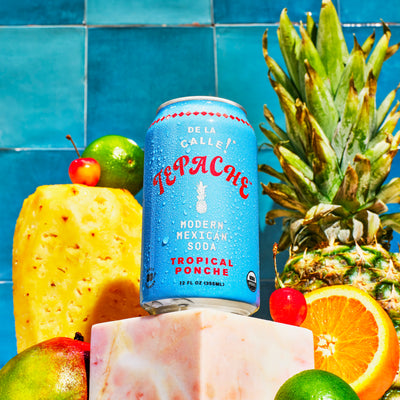7 Traditions Unique to Mexican Culture

In the United States, Mexican culture is strongly associated with Mexican cuisine. Most people are familiar with the most popular Mexican street foods and beverages, such as tacos and Aguas Frescas. Although Mexican cuisine is emblematic of Mexico, several other traditions and holidays make Mexican culture so rich and distinct. Let’s take a look at seven traditions that are unique to the culture of Mexico!
Piñatas
While you might be familiar with the piñata as a party staple, you might not know about its exciting history and place in Mexican culture.
In the 16th century, the piñata custom was brought to Europe from China and adapted to the Christian calendar. For this reason, these sculptures were first made in Europe to celebrate Lent. The first Sunday of Lent became known as “piñata Sunday” because, in Italian, the word pignatta translates to “fragile pot.” This translation points to the original design of piñatas. Given that they were made with no base, they looked similar to clay water-carrying containers that also had no base.
From Italy, the tradition of piñata-making spread to Spain. Once in Spain, the first Sunday of Lent turned into a celebration called “Dance of the Piñata.” Originally, the Spanish used a plain, unadorned container for the festivities called la olla. As the tradition evolved, the Spanish began to decorate the pot with ribbons and colorful paper.
In the New World
When Spanish missionaries and conquistadores traveled to Mexico in the 14th century, they tried to use the piñata to draw crowds to their religious ceremonies and convert indigenous people to Christianity, not knowing that the Aztec people already had a similar tradition. The Aztec people would place a clay pot on the top of a pole at the end of the year to celebrate the god of war, Huitzilopochtli. The pot was decorated with feathers and elaborate designs and filled with small treasures. They would use a stick to break the pot, allowing the treasures to fall to the feet of the god’s place of honor as a celebration.
Another piñata-like tradition was practiced by the Mayan people. As lovers of sports and athletic events, they would play a game where one’s eyes were covered, and they would have to hit a clay pot hanging from a string.
Missionaries combined all of these indigenous traditions with their conception of piñatas to serve a religious purpose. Like the Aztecs, they decorated the clay pot to give it a somewhat fearful appearance. As illustrated by the example of the piñata, several Mexican traditions are born from a blending of both Spanish and indigenous traditions.
The traditional Christian piñata looks like a star with seven or ten points. Each point represents one of the seven deadly sins or the ten sins that occur when the Ten Commandments are broken. The stick used to break the piñata is representative of the love needed to destroy sin, and the small treasures and treats inside the piñata are symbolic of forgiveness of sin and new beginnings.
Quinceañera
Although other parts of the world hold large celebrations on a person’s 18th or 21st birthday, in Mexico, a girl’s 15th birthday is marked by la fiesta de quinceañera. The exact origin of the quinceañera is unknown, but it is thought to be a tradition passed down and preserved by the Aztec or Maya people.
In indigenous societies such as these, girls were separated from boys so that they could receive an education that would prepare them to perform domestic and childcare tasks, depending on their status in society. Once girls completed their education, a large celebration was held to mark their new place as respected, educated women in society.
Once the Spanish arrived and colonized what is now known as Mexico, the tradition of the quinceañera also became an event wherein the girls could be auctioned off as brides to potential suitors. The Spanish also wove a trip to the Catholic church into the celebration of the quinceañera. At mass, the girls are expected to give thanks to God for their transition into womanhood.
After mass, a big celebration is held with family and friends wherein there is dancing and food. Usually, a group of boys known as chambelanes performs several choreographed dances with the birthday girl, often including the waltz. Other quinceañera traditions include the presentation of La última muñeca, where the birthday girl is given her final doll that she passes on to a younger girl at the party and the changing of the shoes where the girl’s father replaces her sneakers with high heels.
Mexican Hat Dance
Another name for the Mexican Hat Dance, the national dance of Mexico, is Jarabe Tapatío. This dance originated in the 18th-century but, in the early 19th century, the Mexican Hat Dance was banned by the Spanish colonial ruling class because it was considered immodest and sexually suggestive. Given that it was banned, the dance became a form of resistance and an expression of political freedom from Spain.
Alebrijes
Alebrijes are vivid, colorful papier-mache or wood sculptures first made by Pedro Linares. They are whimsical and surreal.
The story surrounding these sculptures said that Linares fell ill at 30 and experienced an intense fever dream wherein he saw the creatures that would become alebrijes. According to legend, the creatures were so alarming that the sight of them broke his fever and brought him to consciousness. Today, they are considered fine art and used in many traditional celebrations.
Dance of the Parachicos de Chiapas
At the beginning of the year, from January 8 to 23, there is a large festival held in Chiapa de Corzo. This festival is best known for the striking dance that happens during this time. Dancers dressed in traditional, embroidered clothing with colored ribbons and elaborate masks carry tin rattles called chinchines. They play these instruments during the dances, resulting in a loud, colorful celebration.
The Papantla Flyers
An awe-inspiring dance takes place in Papantla, Veracruz every year. The leader of the dancers selects a tree, and the trunk of that tree is used as the central pole from which the dancers descend, suspended by only a rope. This traditional dance has its origins in pre-Colombian societies, where it was used by dancers to prove their merit and obtain a prosperous, long life.
San Marcos National Fair
The San Marcos National Fair is one of the oldest and most well-known fairs in Mexico. Every year between April and May, the fair takes place in Aguascalientes. Originally, it was an opportunity for livestock and agricultural products to be traded. Today, you can find art exhibitions, concerts, cultural events, games, food, and much more.
Conclusion
These seven traditions are only a handful of the wonderful traditions that make Mexico such a unique, vibrant country. The best way to experience Mexican culture is to travel there yourself and witness these beautiful traditions in person!
Sources:
Piñata [Object] | Children and Youth in History
The Mexican Hat Dance - Jarabe Tapatio | donQuijote
Alebrijes: Surreal Oaxacan Folk Art | Chamizal National Memorial (US National Park Service)











